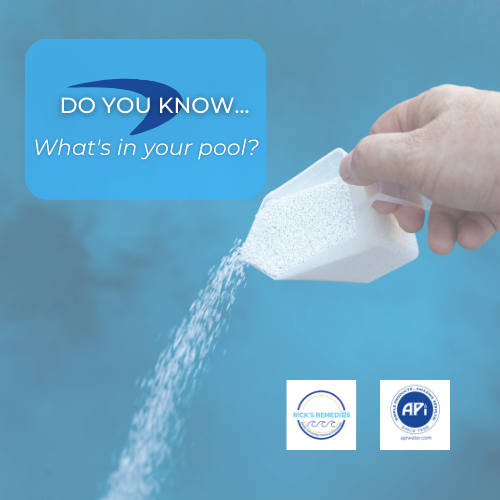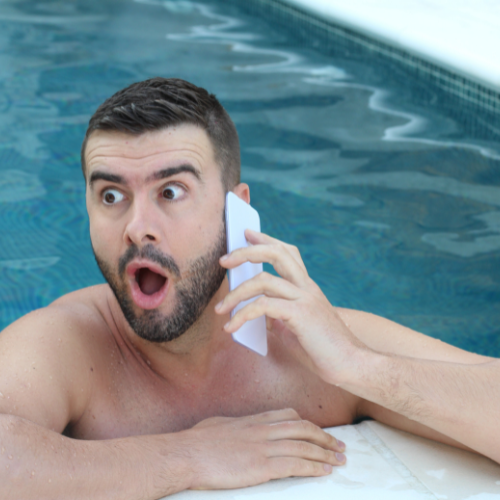Rick's Remedies: What's in your pool? Do you know what you're adding?

We are well into swim season and pools have been open long enough to be enjoyed!
Unfortunately, some pools have already experienced water quality issues that require a lot of time, products, and money.
Stories abound of people dumping seemingly endless amounts of chemicals into their pools.
Do you know what you are really adding to your pool? Put your swim cap on, cuz this is gonna blow your hair back!
First Up...Liquid Chlorine (aka, Pool Shock)- Most often 10-12% Sodium Hypochlorite
Main Goal
- Increase level of Free Chlorine (FC) in the water
- one gallon of liquid shock adds approximately 10-12ppm of FC to 10,000 gallons of water
Unintended Side Effects
- Raises pH of water
- Liquid shock pH is approximately 13
- Increases salinity (salt) in the water
- 1gal of liquid shock adds approximately 1lb of salt
Chemicals/Process Required to Counter
- Acid to reduce the pH back to desired range
- Drain & dilute to keep salinity in check
"WHOA! I'm adding a POND OF SALT for every gallon of liquid shock I add to the pool?!?!"
Yep! You sure are. Think about pools that have water in them that are a few years old and how much salt has been inadvertently added.
A lot of pools have substantial salt levels despite the fact they aren't a salt water pool!
Next Up...Calcium Hypochlorite (aka, Granular Shock)- Most often 68-73% Calcium Hypochlorite
NOTE: All granular shocks are NOT the same. Make sure to read your labels!
Main Goal
- Increase level of Free Chlorine (FC) in the water
- one POUND of calcium hypochlorite (Cal-Hypo) adds approximately 8ppm of FC to 10,000 gallons of water
Unintended Side Effects
- Raises pH of water
- Cal-Hypo pH is approximately 9
- Increases calcium level in the water
- for every 1ppm of FC about .8ppm of calcium is added
Chemicals/Process Required to Counter
- Acid to reduce the pH back to desired range
- Stain & scale products to prevent calcium from forming scale
- Drain & dilute to keep calcium in check
Finally...Let's look at chlorine tablets (aka, trichlor) 99% trichloro-s-triazinetrione (usually 1" or 3" tablets-sometimes as a powdered shock)
Main Goal
- Increase level of Free Chlorine (FC) in the water
- one pound of trichlor adds approximately 10.5ppm of FC to 10,000 gallons of water
Unintended Side Effects
- Lowers pH of water
- trichlor pH is approximately 3
- Lowers alkalinity in the water
- lower pH brings down alkalinity with continued use
- Increases stabilizer (aka, cyanuric acid-CYA)
- approximately 33% off a trichlor tab is trichlor
- trichlor adds approximately 5.5oz of CY to pool
Chemicals/Process Required to Counter
- Soda ash to raise pH back to desired range
- Sodium bicarbonate to raise alkalinity back to desired range
- Drain & dilute to keep CYA levels in check (higher is NOT better)
Keep in mind, this list is just THREE common chemicals. Every chemical that is added to the pool has intended & unintended effects.
→Acid lowers pH and alkalinity.
→Some stain & scale products use a formula that contains phosphates.
→Even adding fresh water can impact water chemistry and balance!
Just like prescription medications for people, make sure to understand the side effects when dosing your pool.
Knowing what else you are adding or taking away can save time, money, and frustration!
Learn more about the versatility of APi brand products at www.apiwater.com
